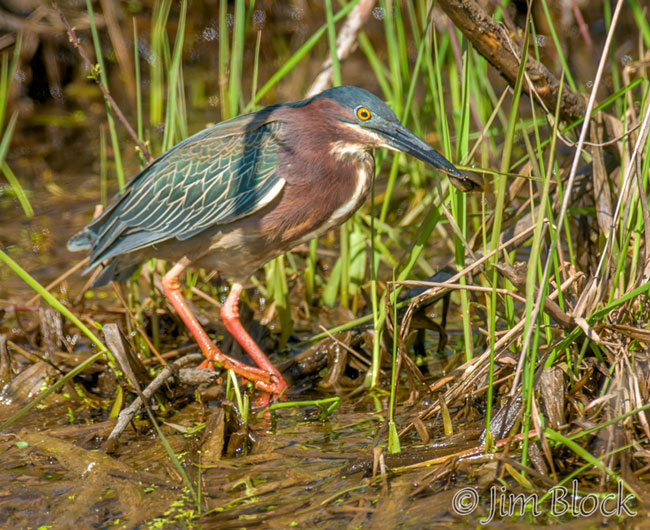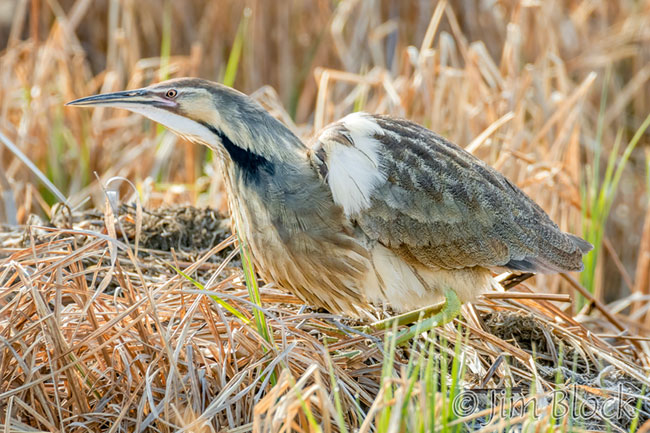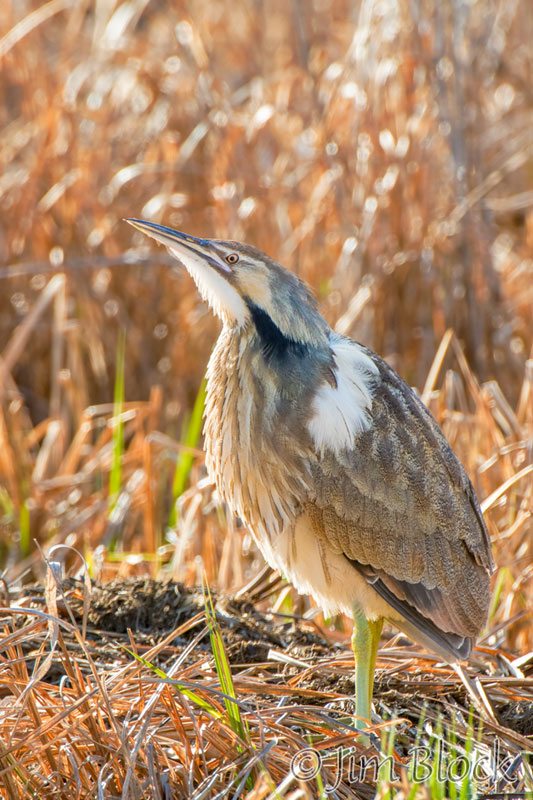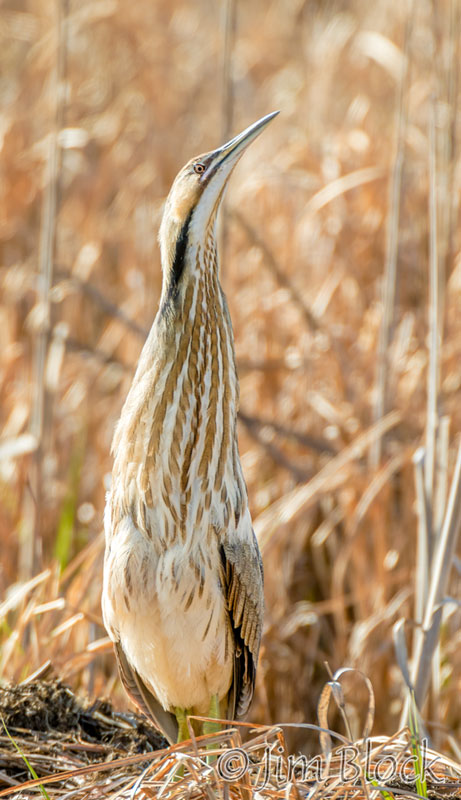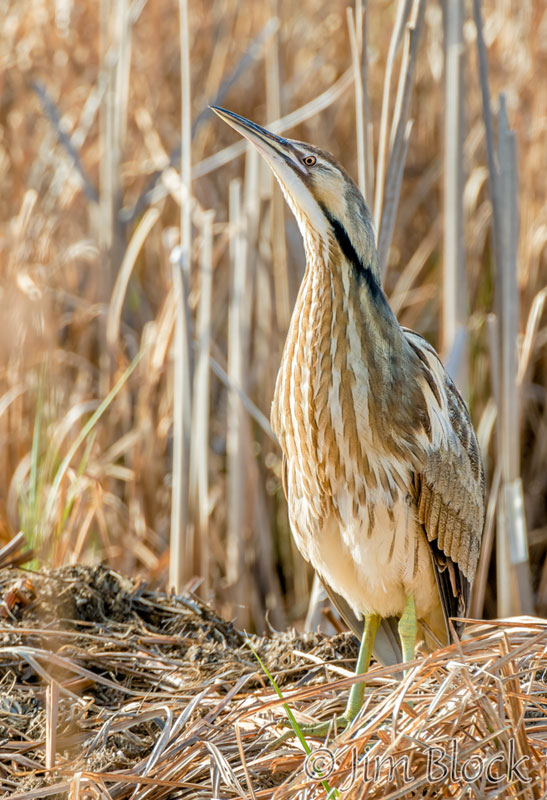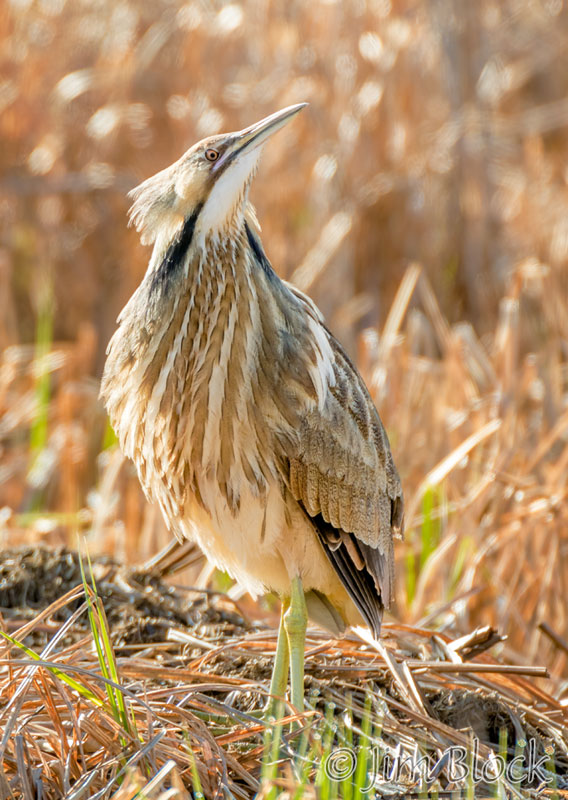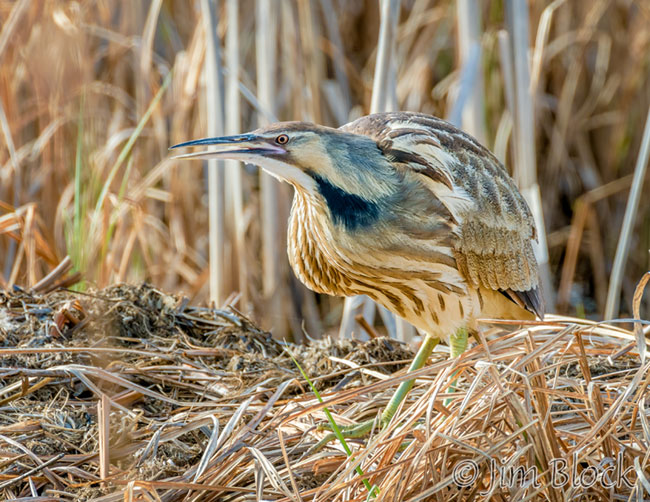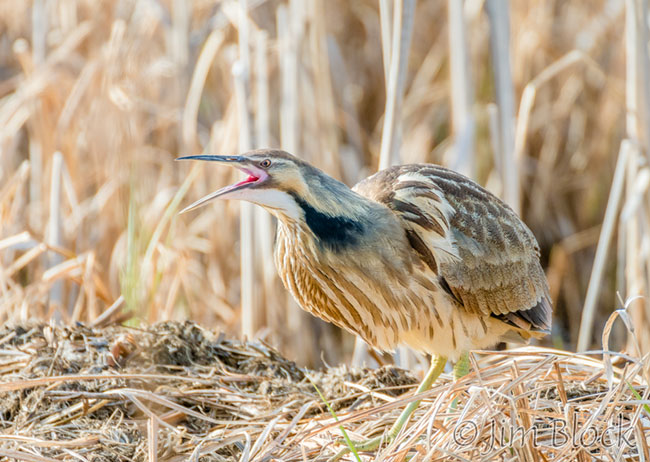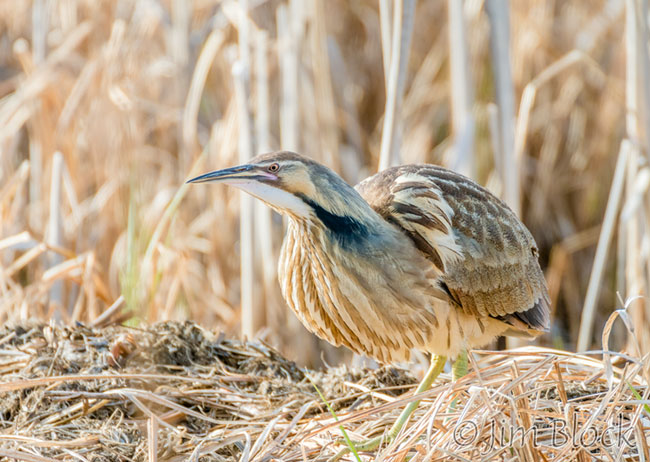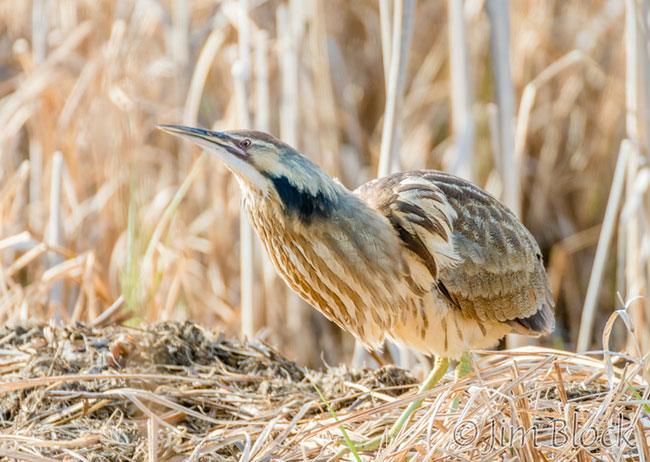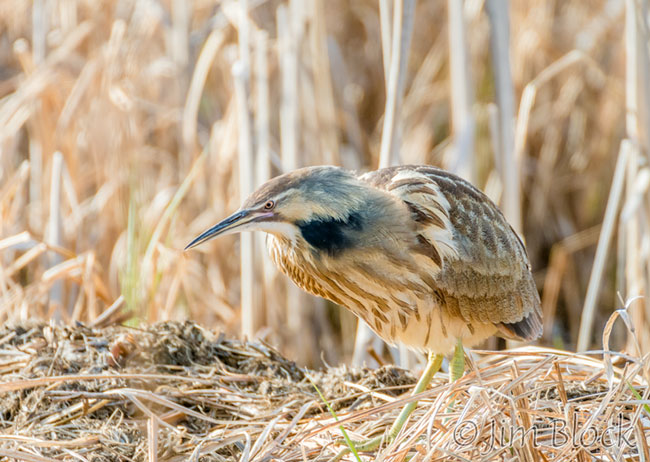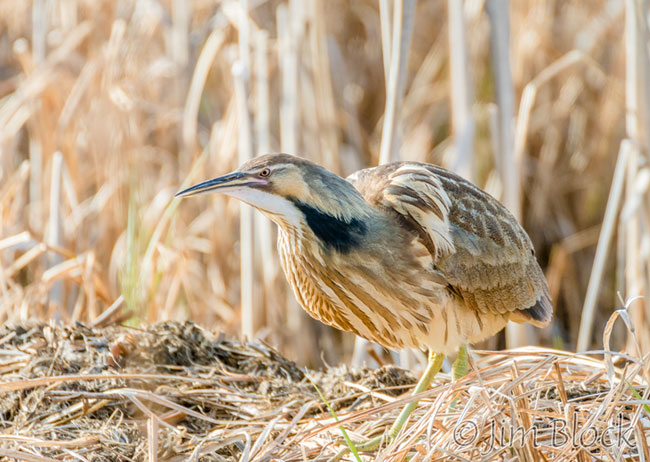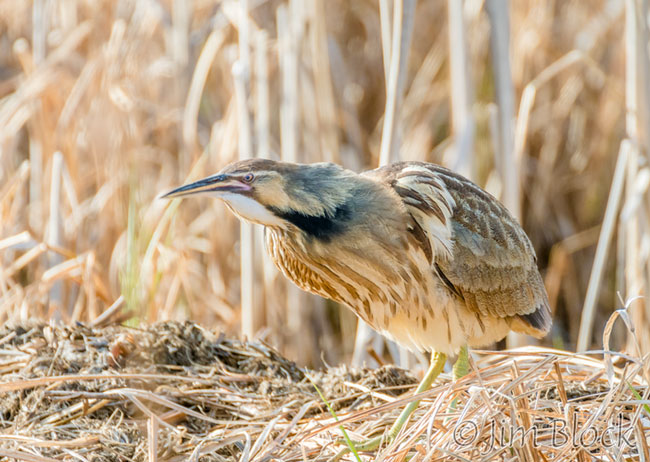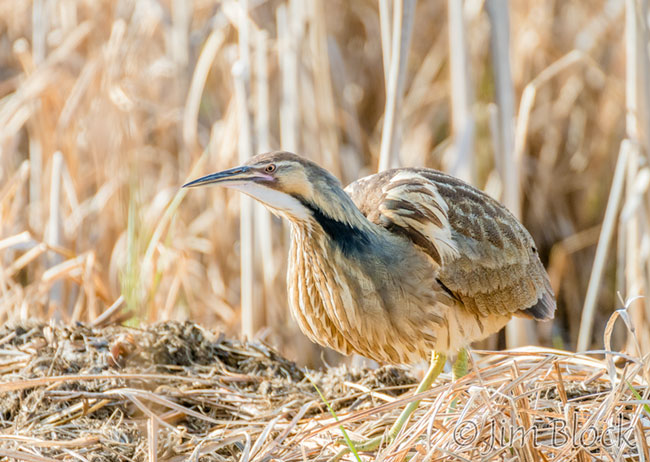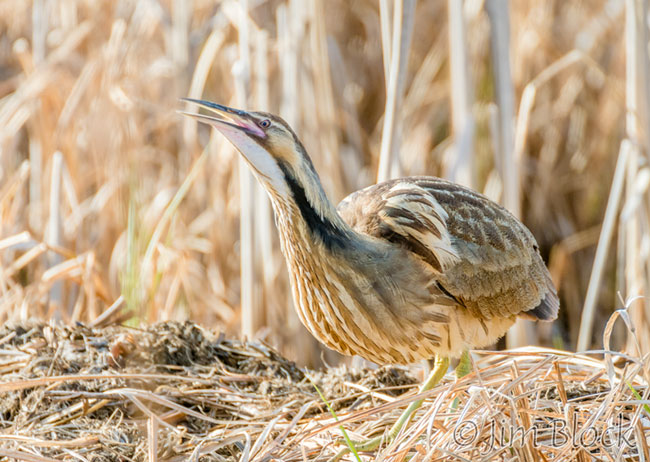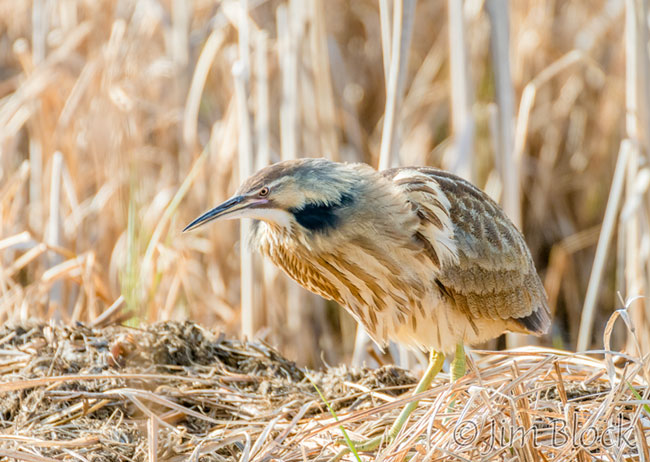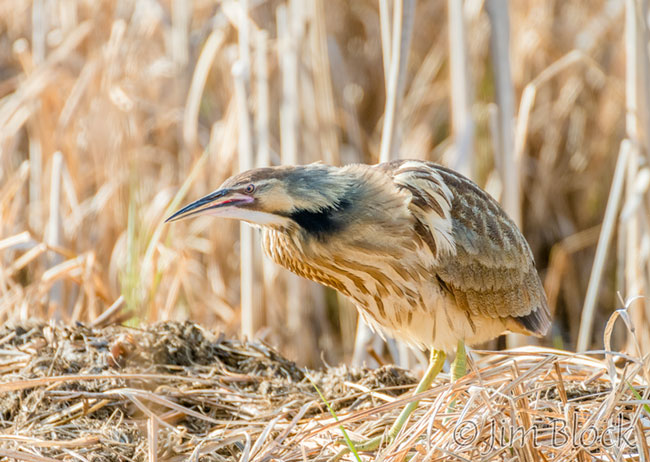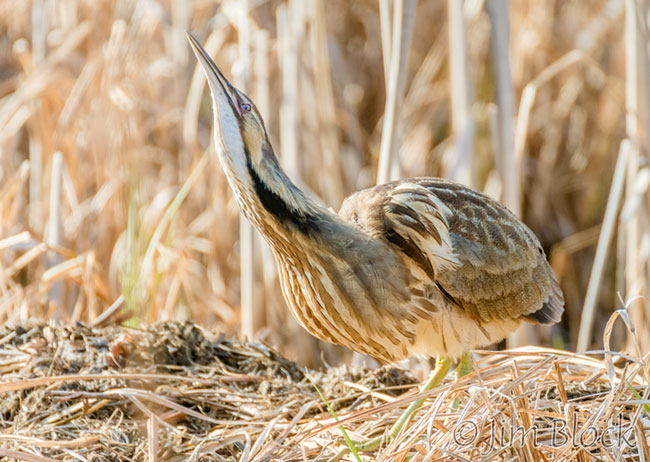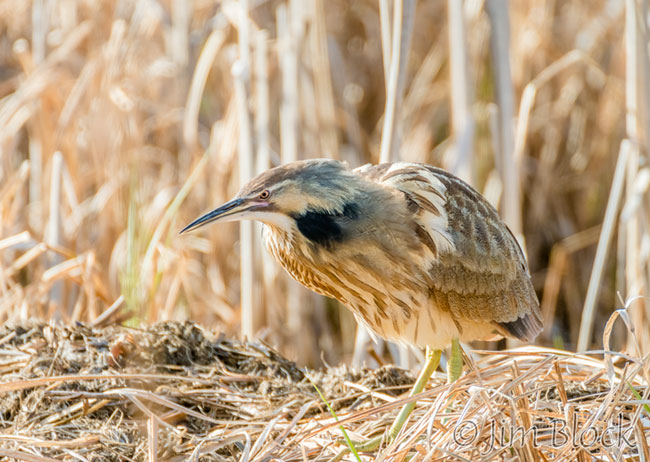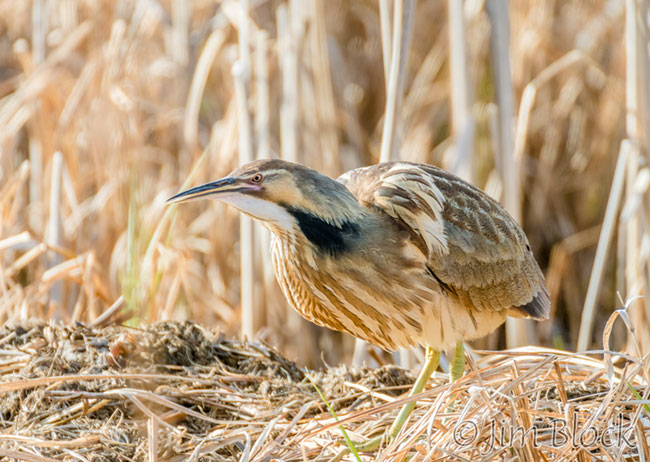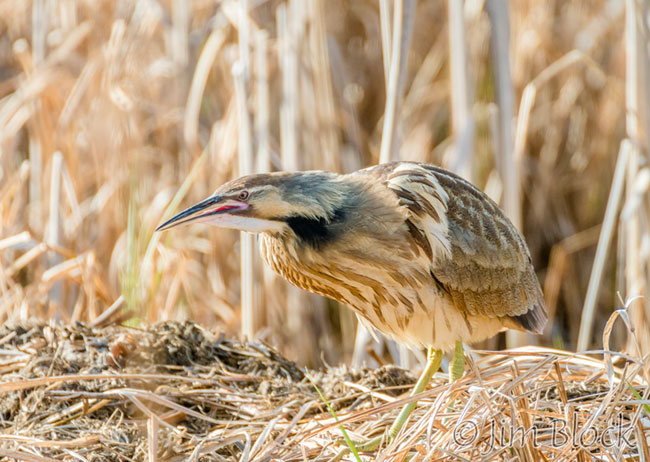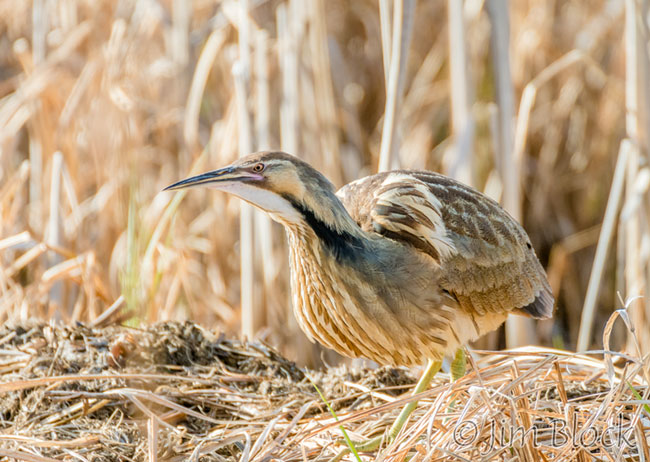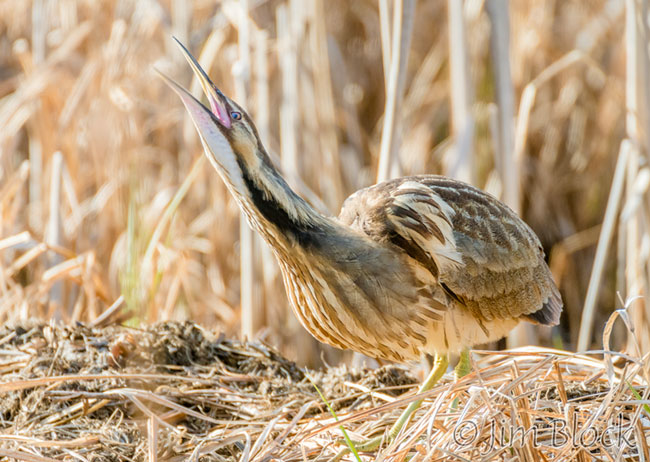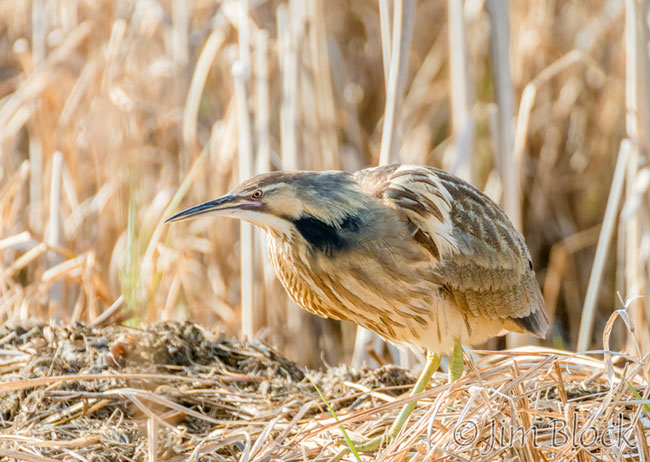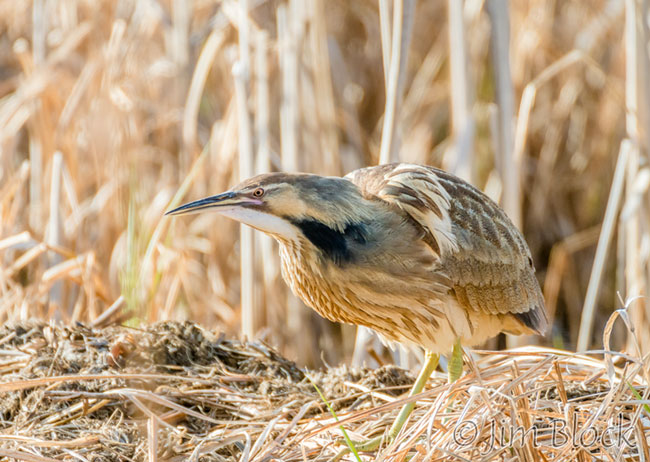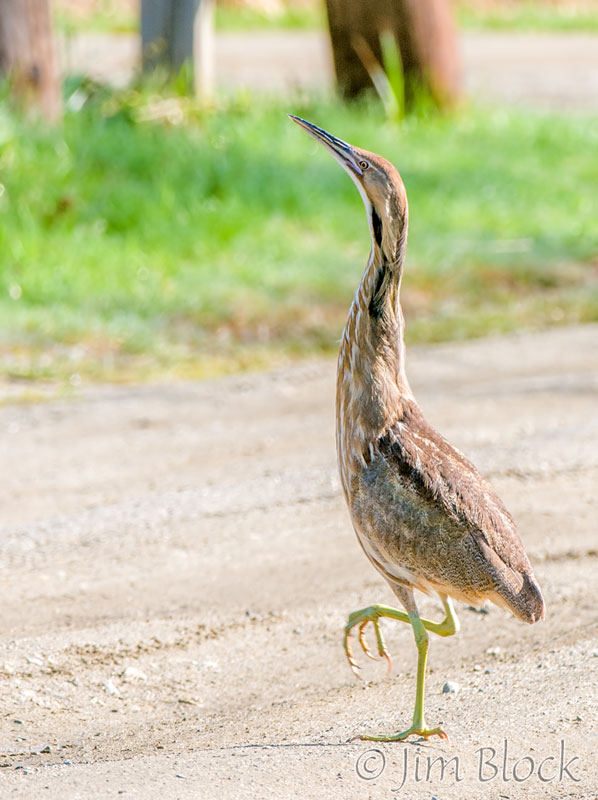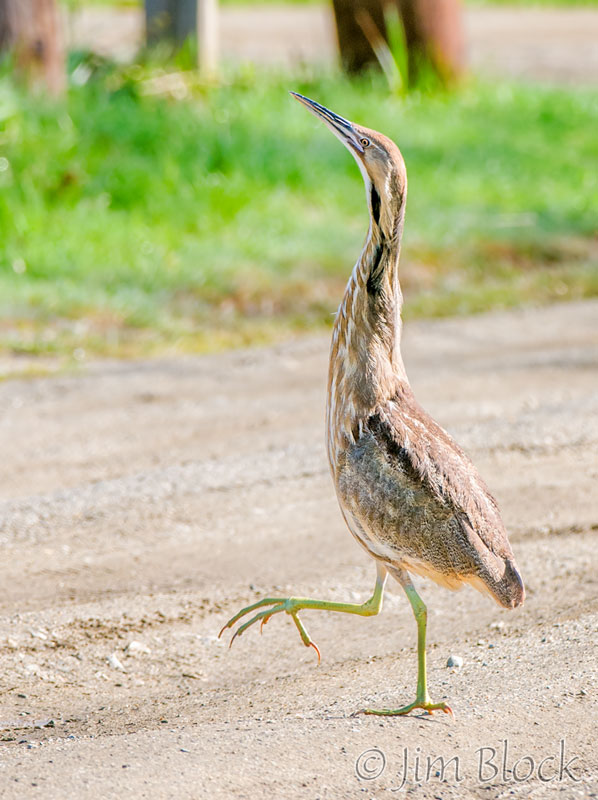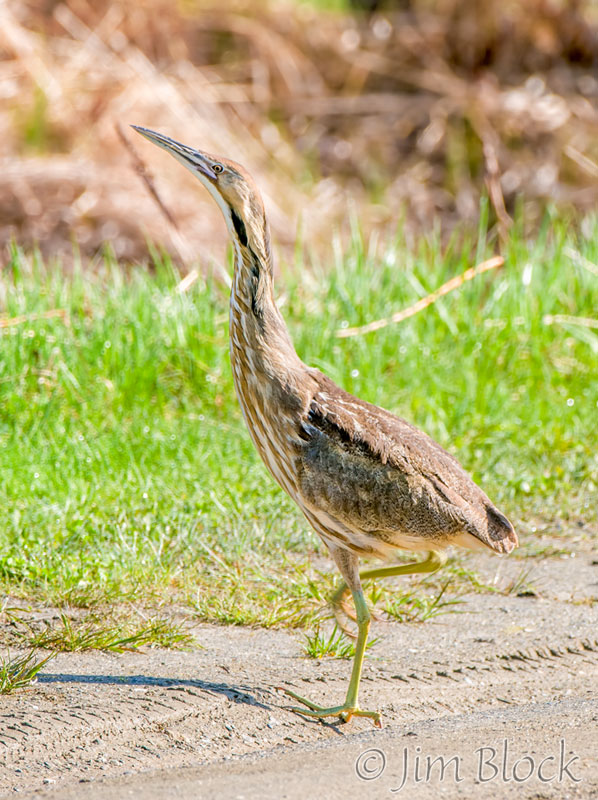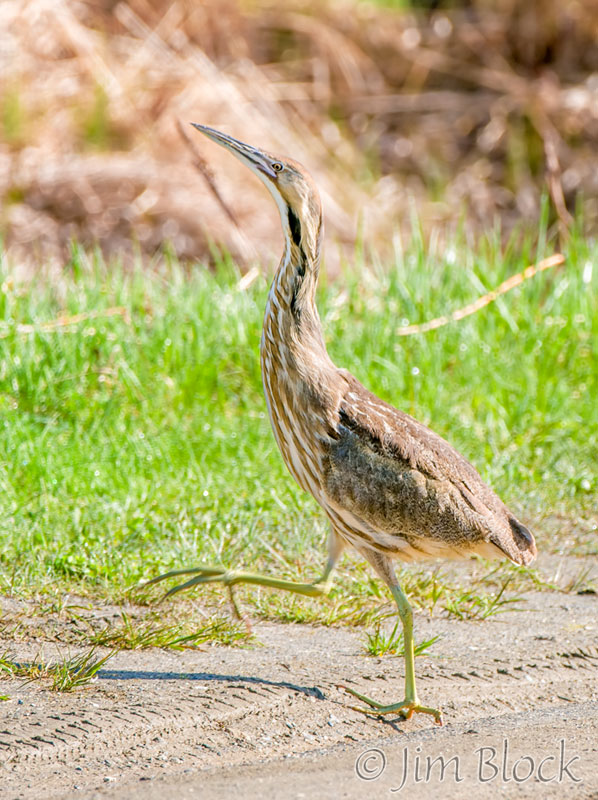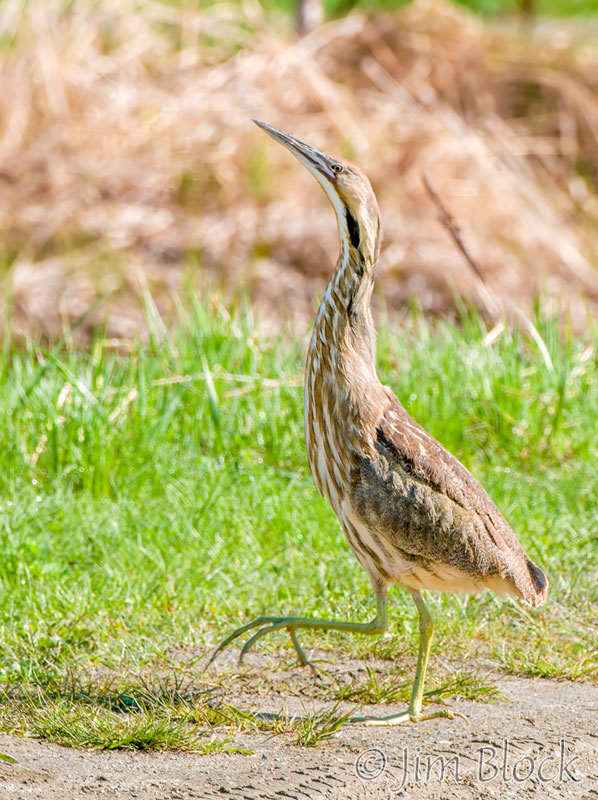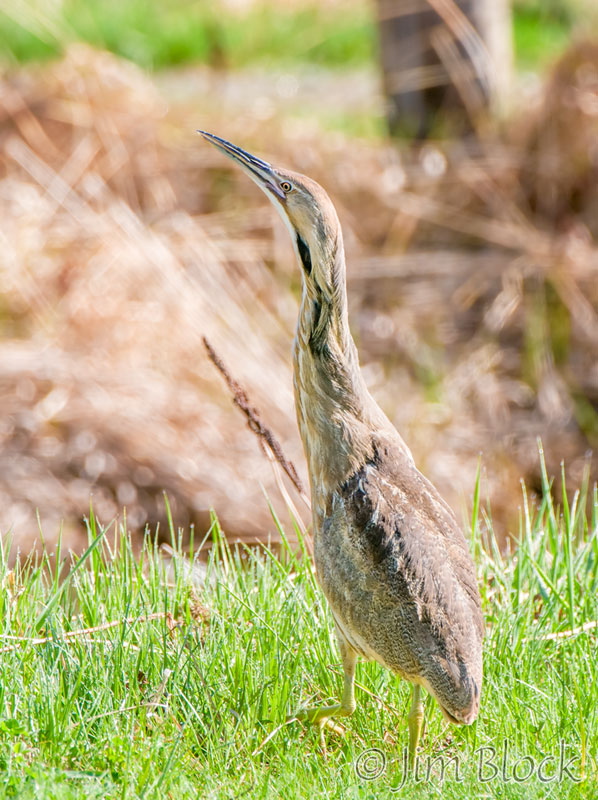After photographing an American Bittern at Zebedee Wetlands five days earlier, I travelled to Post Pond in Lyme to try my luck there. I had seen bitterns at this spot in previous years, and sure enough I found a beautiful bittern soon after arriving.
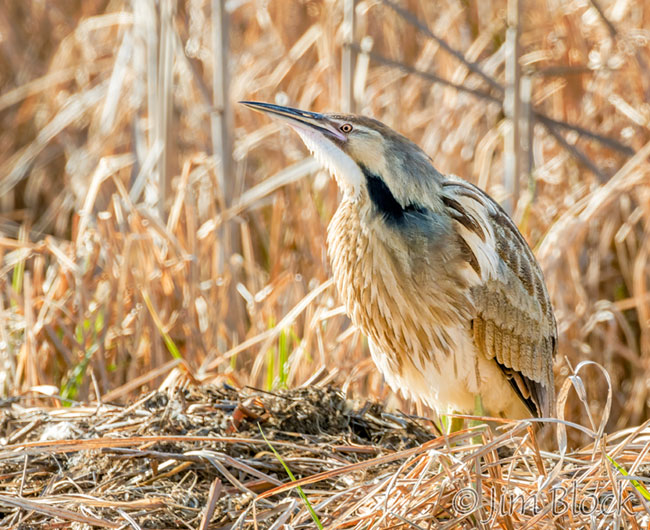
Below is a photo of a wetland near Post Pond in Lyme. Can you find the bittern? Probably not. These guys are hard to see even if they are up close.
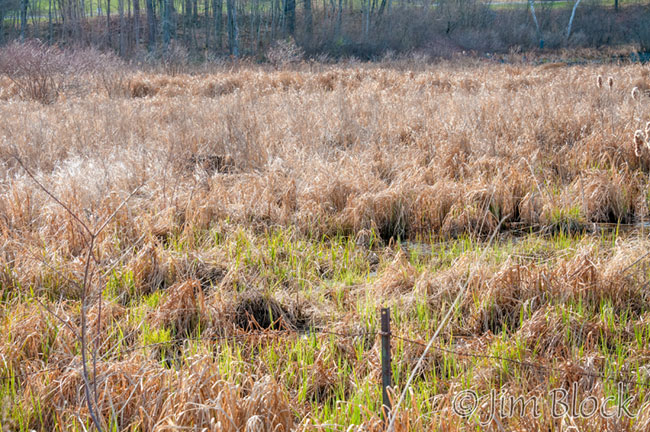
Here is a blowup of the previous photo. You might be able to spot it now.
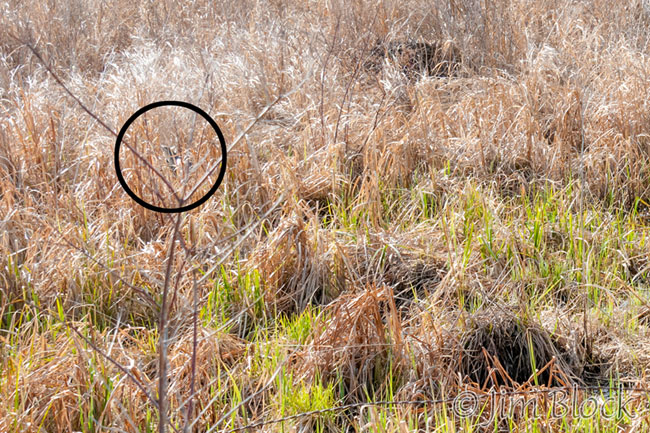
I got this photo with a different camera and lens.
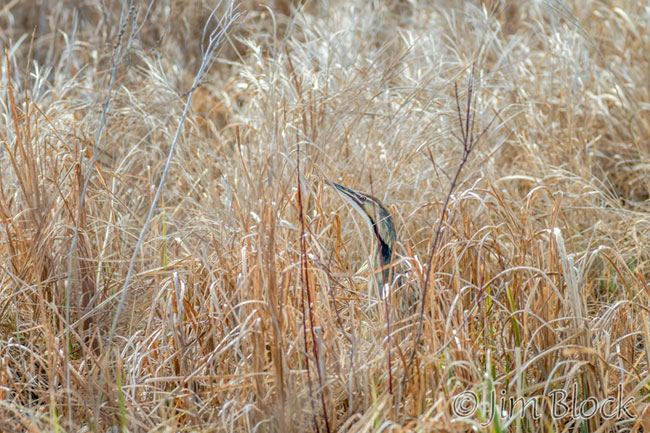
The bittern moved around a bit. Note the raised right leg in the photo at the left. Amazingly the bittern perched at a spot that was wonderful for photography. Perhaps it knew it was beautiful and wanted to show off.
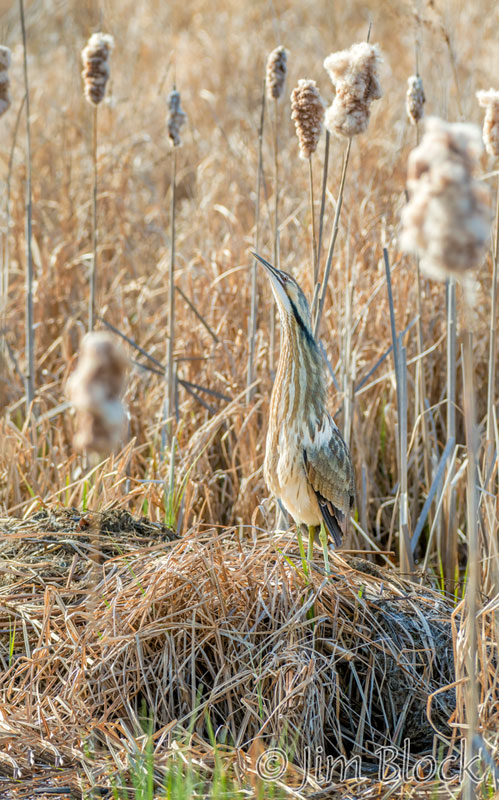
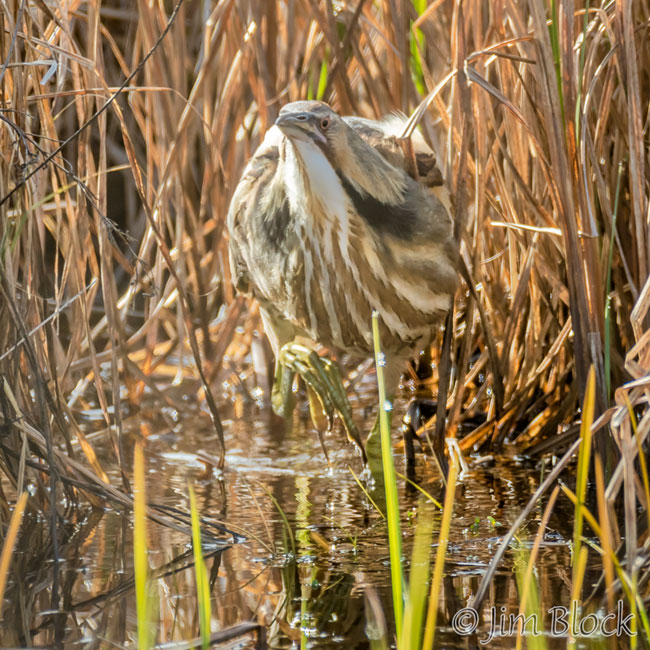
Below are three slide shows. Please don’t forget to view them all.
This slide show contains various photos I took of this wonderfully cooperative American Bittern.
A few years ago my wife and I were walking near a wetland in Sunapee. We met a woman who described hearing a bird that “sounded like water running out of a large pipe”. That to me said American Bittern. Sibley describes its song as “a deep, gulping, pounding BLOONK-Adoonk repeated”. Ever wondered how it makes this “song”?
Here are a sequence of photos taken during a 7.5 second period when the bittern was “singing” or “thunder pumping”.
Exactly eight years ago today, in the same location, a bittern was feeding in a gully on the “wrong” side of the road. I photographed it up close and personal until I got bored and went to find other birds. Below is an uncropped photo taken at a focal length of 400mm.
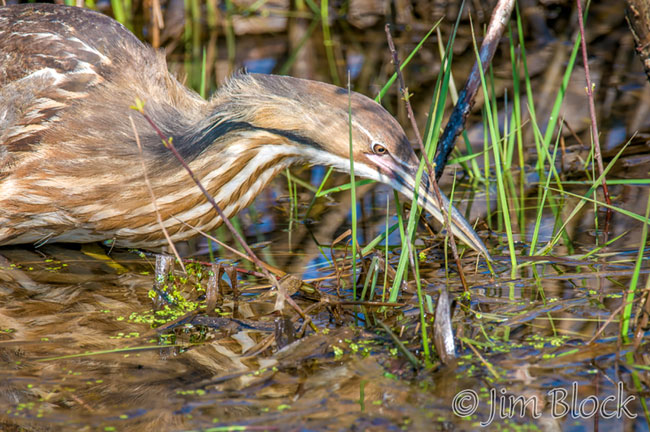
Then 4 days later at the same location a bittern walked from the wetland and crossed the road in front of me toward the same small drainage area. Notice the amazing toes and claws the bittern has.
After this bittern crossed the road it flew up to a low branch. It sat there briefly then took off flying straight at me then to my left around me and back into the wetland. So why did the bittern cross the road??? Here are two photos I took of it after the 2008 bittern landed in the wetland.
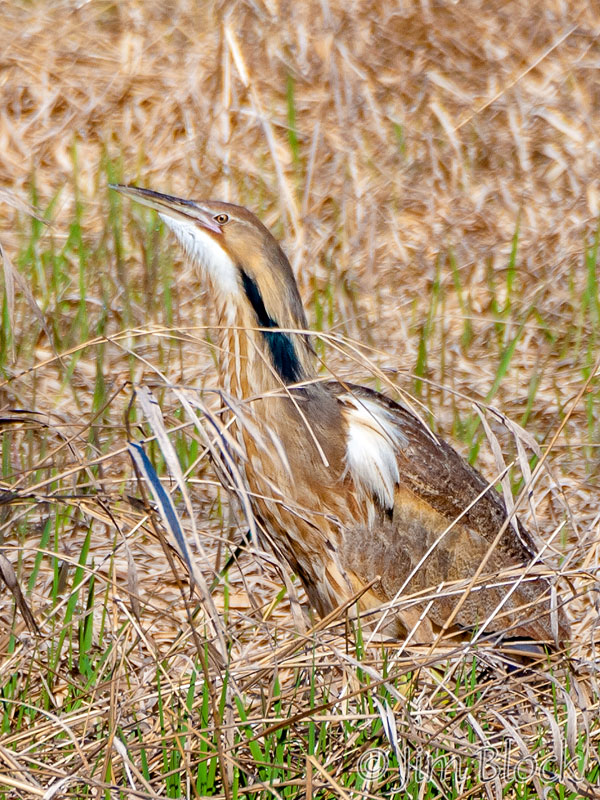
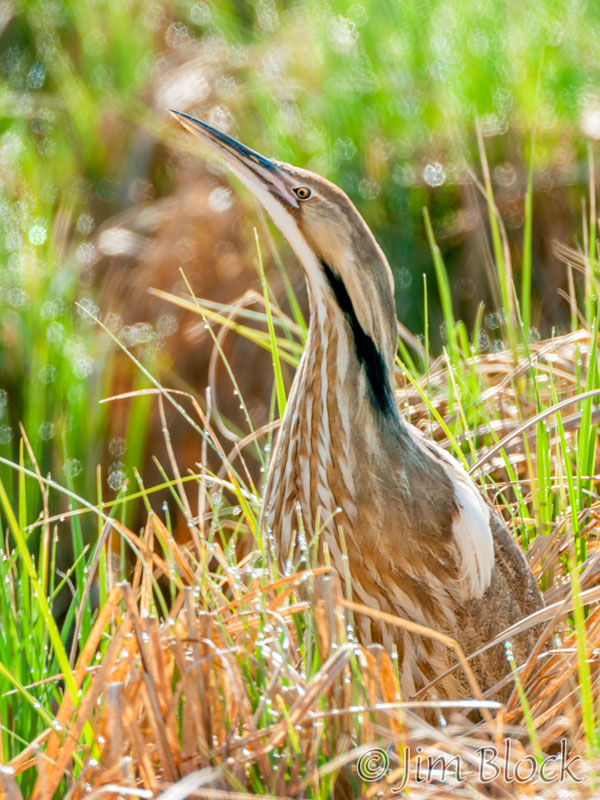
In 2008, after the Bittern disappeared I wandered around the area and photographed other birds. I returned to the gully to find a Green Heron.
This is a fantastic spot in early spring.
